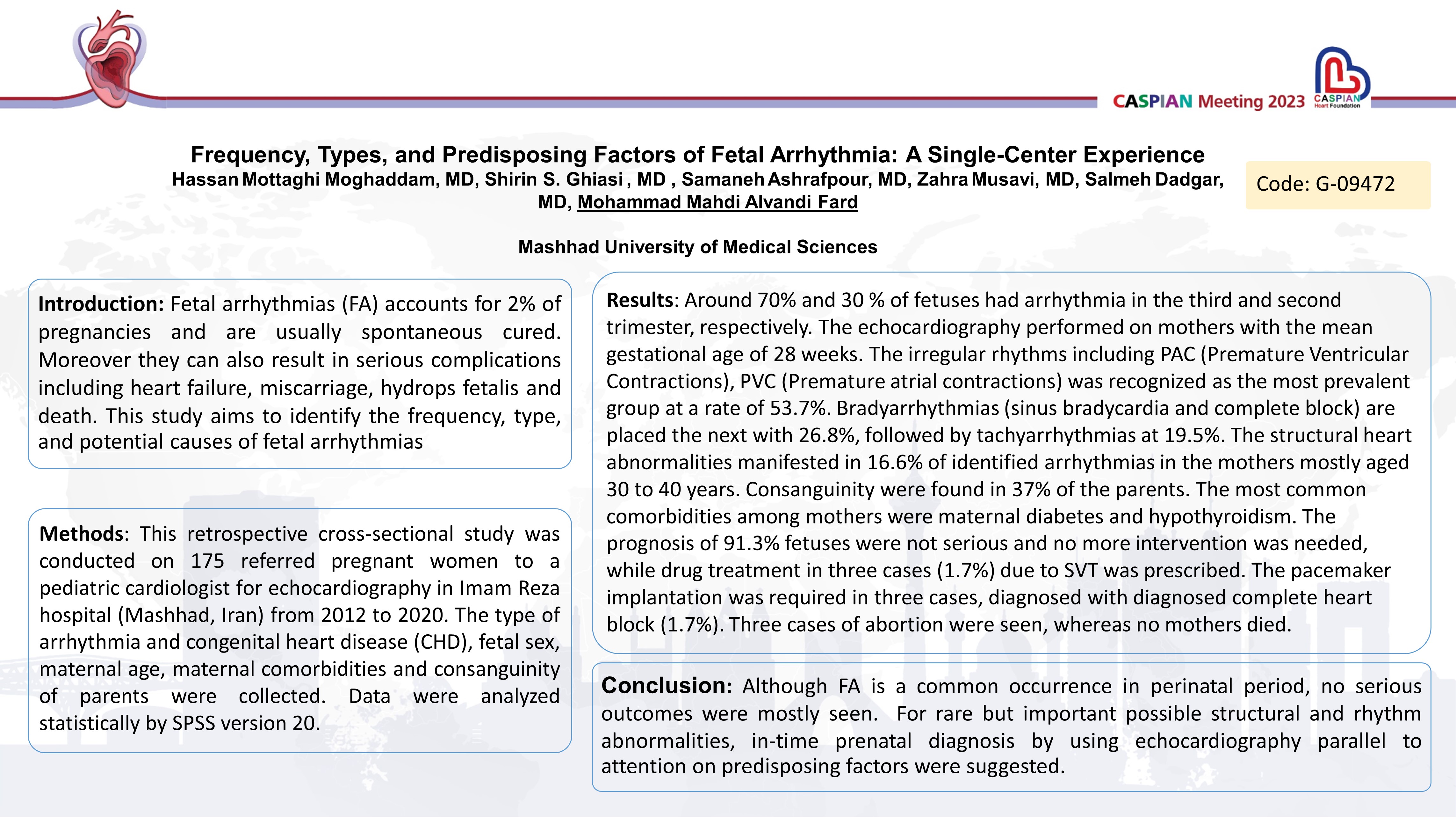Frequency, Types, and Predisposing Factors of Fetal Arrhythmia: A Single-Center Experience
Code: G-50369
Authors: Mohammad Mahdi Alvandi Fard ℗, Parisa Qayenipour, Shirin Ghiasi, Samaneh Ashrafpour, Hasan Mottaghi ©, Zahra Musavi, Salmeh Dadgar
Schedule: Not Scheduled!
Download: Download Poster
Abstract:
Background
Fetal arrhythmias (FA) accounts for 2% of pregnancies and are usually spontaneous cured. Moreover they can also result in serious complications including heart failure, miscarriage, hydrops fetalis and death. This study aims to identify the frequency, type, and potential causes of fetal arrhythmias.
Methods
This retrospective cross-sectional study was conducted on 175 referred pregnant women to a pediatric cardiologist for echocardiography in Imam Reza hospital (Mashhad, Iran) from 2012 to 2020. The type of arrhythmia and congenital heart disease (CHD), fetal sex, maternal age, maternal comorbidities and consanguinity of parents were collected. Data were analyzed statistically by SPSS version 20.
Results
Around 70% and 30 % of fetuses had arrhythmia in the third and second trimester, respectively. The echocardiography performed on mothers with the mean gestational age of 28 weeks. The irregular rhythms including PAC (Premature Ventricular Contractions), PVC (Premature atrial contractions) was recognized as the most prevalent group at a rate of 53.7%. Bradyarrhythmias (sinus bradycardia and complete block) are placed the next with 26.8%, followed by tachyarrhythmias at 19.5%. The structural heart abnormalities manifested in 16.6% of identified arrhythmias in the mothers mostly aged 30 to 40 years. Consanguinity were found in 37% of the parents. The most common comorbidities among mothers were maternal diabetes and hypothyroidism. The prognosis of 91.3% fetuses were not serious and no more intervention was needed, while drug treatment in three cases (1.7%) due to SVT was prescribed. The pacemaker implantation was required in three cases, diagnosed with diagnosed complete heart block (1.7%). Three cases of abortion were seen, whereas no mothers died.
Conclusions
Although FA is a common occurrence in perinatal period, no serious outcomes were mostly seen. For rare but important possible structural and rhythm abnormalities, in-time prenatal diagnosis by using echocardiography parallel to attention on predisposing factors were suggested.
Keywords
Fetal arrhythmia, echochardiography, Congenital Heart Disease
